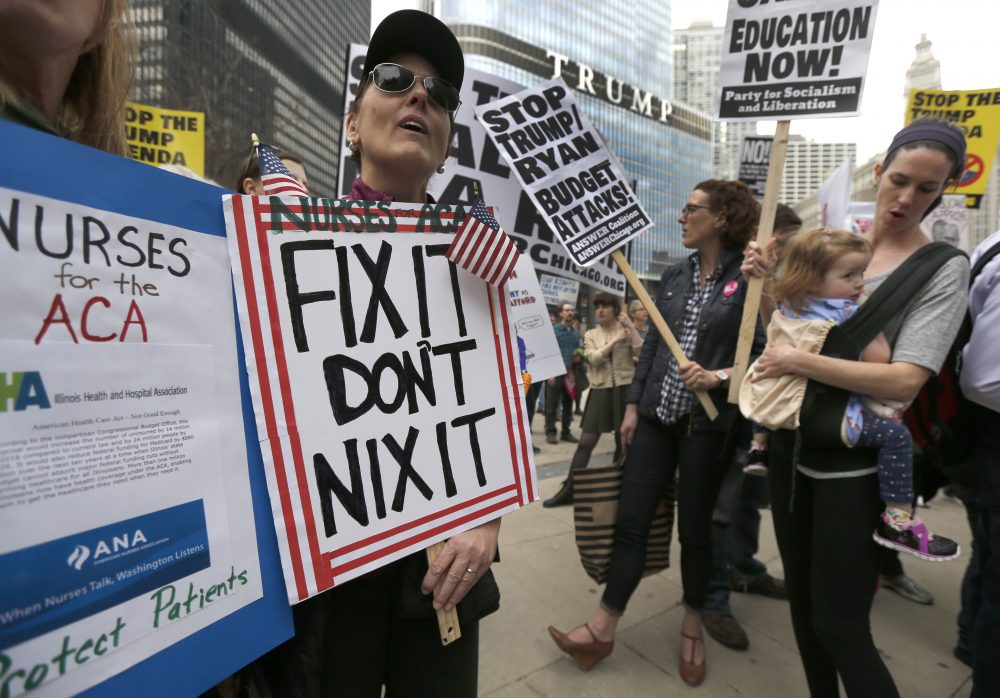Advertisement
Commentary
Obamacare: What Doesn’t Kill It Makes It Stronger

As the nation considers the utter collapse of the Better Care Reconciliation Act (BCRA), advanced by Senate Majority Leader Mitch McConnell, to repeal and replace the Affordable Care Act (ACA), some perspective is in order. Since President Trump’s Nov. 8 election, I have heard many people’s distress about the dire threats to the ACA that initially seemed so certain last November.
So, let’s consider…
First, Michael Reich, my colleague at the Harvard T. H. Chan School of Public Health who has worked on national health reforms all over the globe, reminds me that the moment of truth, the acid test, for any health reform happens when the government that created it leaves office and is replaced by a new government, and the new leaders must decide for themselves what will stay or go.
As we have witnessed since November, this is not just a choice for a new administration; it is a choice for Congress and for American society. Since the election, Americans have had to confront a dilemma -- namely, what do they care about regarding the Affordable Care Act and what are they prepared to do to defend it?
After the election, with shocking abruptness, polls on the favorability of the Affordable Care Act began to increase after years of being stuck in 40 percent purgatory. Suddenly, Americans began focusing on policies such as banning pre-existing condition exclusions, expanding Medicaid, requiring coverage of essential health benefits such as maternity care, prescription drugs and much more.
Mindless, casual opposition to Obamacare became tougher when opponents had to articulate a replacement.
Mindless, casual opposition to Obamacare became tougher when opponents of the law had to articulate a replacement. An example: Though opponents got traction by attacking the Affordable Care Act's individual mandate, Republican replacement plans articulated alternatives that looked worse, including reinstating pre-existing condition exclusions for Americans who failed to maintain “continuous coverage” for more than 63 days.
The end result is a public far more informed, aware and alert to the details of the Affordable Care Act and health policy in our crazy health system that is the laughingstock of the advanced world. (And if you don’t believe that our system is crazy, please examine Commonwealth Fund’s recent comparison of health systems across 11 advanced nations.)
As stressful as this process has been, what doesn’t kill you makes you stronger — and the Affordable Care Act has never been in better standing with the American public than it is today. Thank you, Donald, Mitch and Paul.
Second, the failure of the "repeal and replace" effort demonstrates a compelling, core feature of behavioral economics — the smartest addition to that “dismal science” in 50 years. The core notion is this: People value hypothetical losses more than hypothetical gains. If I tell Frannie I’m going to give her $100, and I tell John I’m going to take $100 from him, Frannie will say “I’ll believe it when I see it,” and John will come after me with his pitchfork.
In 2009 and 2010, as Democrats promised great benefits from their health reform efforts, potential beneficiaries yawned while opponents, scared by the Tea Party backlash, grabbed their pitchforks to try to kill the legislation. A determined Democratic majority, wizened by memories of President Bill Clinton’s failure to win health reform in 1993-94, got the Affordable Care Act passed with zero votes to spare.
This time it was Republicans offering hypothetical gains of better, more affordable coverage, and Democrats sounding alarms. Republicans faced a credibility chasm claiming their bill would improve Medicaid even as — according to the Congressional Budget Office — the GOP House bill would cut federal spending by $834 billion over 10 years. The essential behavioral economics dynamic that nearly sunk the Affordable Care Act in 2010 came back to save it in 2017.
Third, and I hope this lesson is not lost on Democrats and other progressives, many will over-interpret this victory and conclude that the nation is ready for a single-payer program. While I vastly would prefer a single-payer, Medicare-for-all system, the same dynamic that thwarted the Republicans would haunt such an effort.
Single-payer supporters will extol the hypothetical benefits of their plan, and Republicans will blare a familiar litany: federal government takeover, rationing, scare stories such as the Veterans Affairs Medical Center in New Hampshire, the largest tax increase in American history, financial catastrophe for hospitals, physicians and so much more. The threatened losses will scare away the risk-averse in a heartbeat, and that’s not hypothetical.
The essential behavioral economics dynamic that nearly sunk the Affordable Care Act in 2010 came back to save it in 2017.
Since 1994, voters in three states have considered binding single-payer system ballot initiatives. In all three, the campaigns started with strong, enthusiastic support until the assault, and then experienced ignominious defeat: California in 1994 — 27 percent yes, 73 percent no; Oregon in 2002 — 21 percent yes, 79 percent no; and Colorado in 2016 — 20 percent yes, 80 percent no. Just as instructive was the 2014 withdrawal of a single-payer legislative effort in Vermont as Democratic Gov. Peter Shumlin and overwhelming Democratic majorities in the Vermont Senate and House gave up once early, rosy economic forecasts were replaced by harder and more realistic analyses.
I may be totally wrong. Yet in the recent rush of single-payer exuberance, I see no self-analysis by single-payer advocates of what needs to be learned from these four dismal failures.
There is right now a new window of opportunity in front of us, less glamorous than a swan dive into the single-payer pool. The Affordable Care Act is far less exciting than the real deal. But the deal is only real if it can be won. Meanwhile, Washington, D.C. is still under unitary Republican control. We have opportunities and challenges ahead of us right now, potential gains and real threats.
It’s been a frightening and dangerous several months since Nov. 8. The sky is finally starting to clear. Let’s be disciplined and honest about the real challenges and opportunities ahead.
